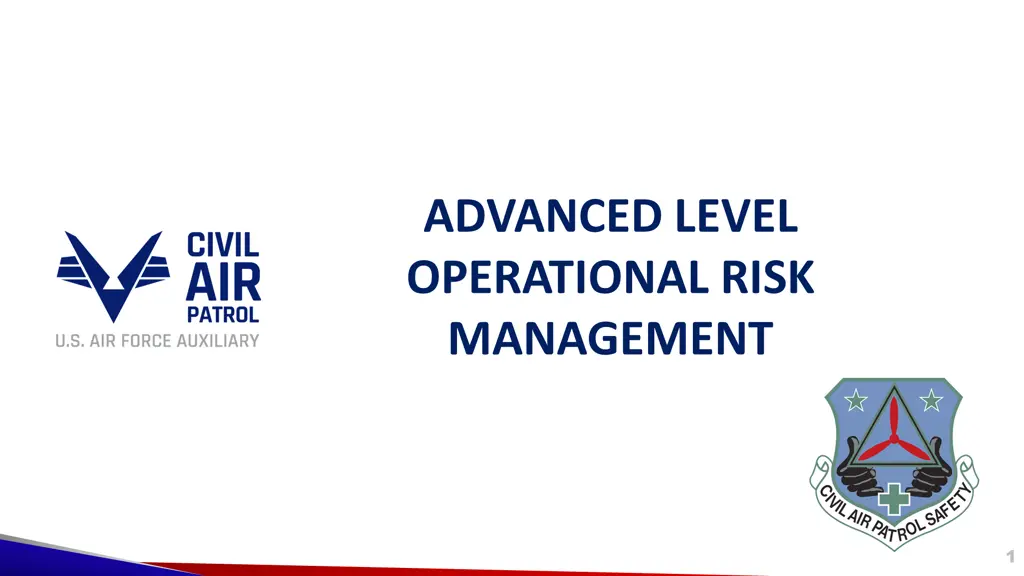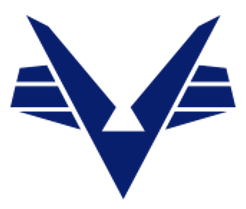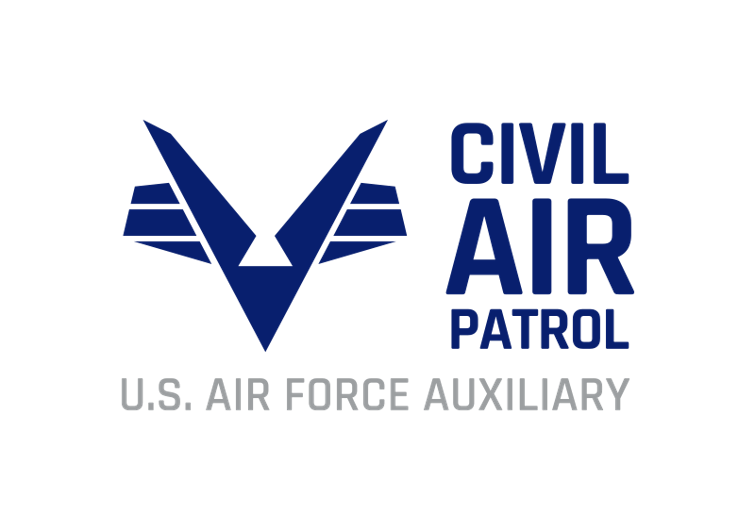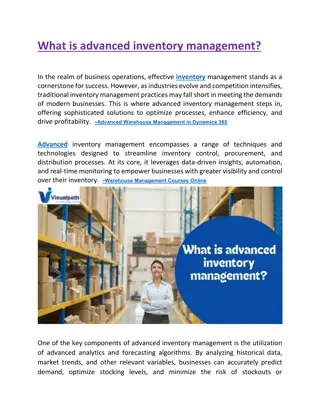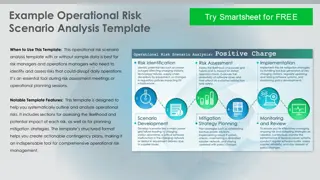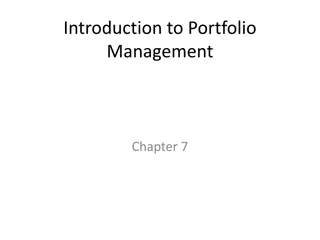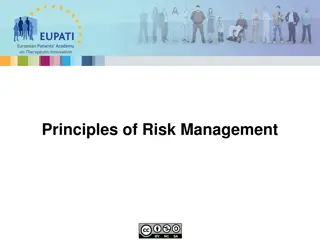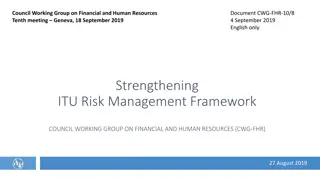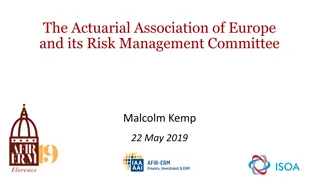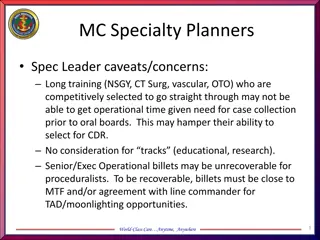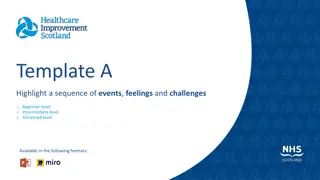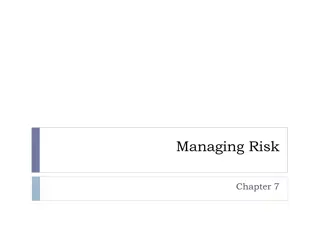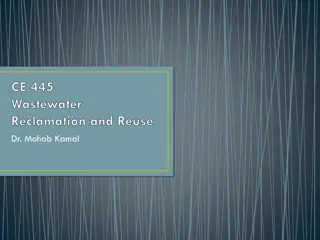Advanced Level Operational Risk Management
A refresher on the principles and steps of Operational Risk Management (ORM), including hazard identification tools and their use in managing risks.
Download Presentation

Please find below an Image/Link to download the presentation.
The content on the website is provided AS IS for your information and personal use only. It may not be sold, licensed, or shared on other websites without obtaining consent from the author.If you encounter any issues during the download, it is possible that the publisher has removed the file from their server.
You are allowed to download the files provided on this website for personal or commercial use, subject to the condition that they are used lawfully. All files are the property of their respective owners.
The content on the website is provided AS IS for your information and personal use only. It may not be sold, licensed, or shared on other websites without obtaining consent from the author.
E N D
Presentation Transcript
ADVANCED LEVEL OPERATIONAL RISK MANAGEMENT 1 1
Review Operational Risk Management (ORM) is a logic-based, common-sense approach to making calculated decisions on human, material and environmental factors associated with any type of activity. It s a six- step process to manage inherent risk. ORM does not replace regulations or allow for disregard of existing regulations. ORM fills the gap between real-world conditions and scenarios which are not already covered under regulation or law. Use of ORM does not guarantee mission success but provides a standard methodology for avoiding or reducing mishaps. If your have forgotten certain aspects of ORM, go back over the two previous courses before proceeding. Otherwise here is a refresher of the main points of ORM.
Operational Risk Management Review The 4 principles of ORM are: Accept no unnecessary risks Make risk decisions at the appropriate level Accept risk when benefits outweigh the cost Integrate ORM into CAP at all levels The 5 steps of ORM are: Identify the Hazards Assess the Risks Analyze the Risk Control Measures Make Control Decisions and implement Supervise and Review The 3 levels of ORM Time-Critical Deliberate Strategic The 5M Model Man Media Machine Management Mission
Whats next? This advanced course will enhance your success by increasing knowledge of the ORM process. There are 7 hazard identification tools presented to help you uncover areas of potential hazards as you work through the ORM s first step. The ORM s steps 2-6 will also be explored in greater detail.
Step 1 Identify the Hazards To identify the hazards, you: analyze the mission, list the hazards and list the causes. Identify the hazards on all of CAP s assets: Aircraft Vehicles Personnel Equipment Identify the hazards to all operational levels: National Region Wing Group Squadron & Flights
Step 1 Identify the Hazards These 7 primary tools are the backbone in identifying hazards in any CAP operation. The 7 Primary Hazard ID Tools: Operations Analysis Preliminary Hazard Analysis What If Tool Scenario Process Tool Logic Diagram Change Analysis Cause & Effect Tool
Step 1 Identify the Hazards Operations Analysis Tool Operations Analysis Tool A big picture look at what is expected to happen. This helps overcome major weakness by focusing on a few intuitively risky areas. Evaluates all elements of operation for potential sources of risk. Put steps of process on index cards or sticky notes so they can rearrange & easily add or eliminate areas or events Project management software to create simple flow chart Itemizes chronological a list of major events of an operation and then each event can be broken down into sub-events
Step 1 Identify the Hazards Preliminary Hazard Analysis Tool Preliminary Hazard Analysis Tool Used to identify hazards requiring more in-depth identification Easy to use and takes very little time Activity or Event Hazard Provides initial overview of hazards present in overall operational flow Step 1 Hazard 1 Hazard 2 Briefly considers risk in every aspect Can serve only as a hazard ID tool for low risk or routine Step 2 Hazard 1 In higher risk operations, use to focus and prioritize risk Step 3 Hazard 1 Hazard 2 Used in virtually all ORM except time critical operations Usually based on the operational analysis tool results
Step 1 Identify the Hazards What If Tool One of the most powerful hazards ID tools. Typically used after the operations analysis and preliminary hazard analysis. Designed to add structure to the intuitive and experiential expertise of operational personnel. Especially effective in capturing hazard data about failure modes Can be used on time critical applications Captures input of operational personnel in brainstorming like environment. Visualize expected operational flow in chronological order from beginning to end and then select a segment to focus on. Use Murphy s Law to anticipate failures and worse-case scenarios.
Step 1 Identify the Hazards Scenario Process Tool Identify hazards using imagination and visualization to reveal unusual hazards. Construct a mental movie to walk thru events immediately ahead of and of the actual hazard. Visualize twice; once as they should be, then with worse credible scenarios Ability to link two or more individual hazards makes it one of the best tools Entertaining, dynamic and motivating for even the most junior personnel Best to follow flow of events outlined in the operational analysis tool Can be only tool needed in time critical events
Step 1 Identify the Hazards Logic Diagram Tool The most comprehensive and detailed of the hazard identification tools. Most effective with complicated operations where hazards are interlinked in various ways. Tree-like structure establishes the connectivity and linkages that may exist between hazards. It s graphics captures and correlates the hazards data produced by the other tools. Three major types of logic diagrams - Positive diagram. Highlights factors that must be in place if risk is to effectively controlled - Event diagram. Focuses on one event, often a failure identified with what if tool, and examines possible outcomes - Negative diagram. Selects a loss event and analyses various hazards that could combine to produce that loss Excellent place to use the 5M Model Interaction between Man, Machine, Media, and Management to produce Mission success.
Step 1 Identify the Hazards Logic Diagram Tool s PRIMARY CAUSE SUPORTING CAUSE EVENT SUPORTING CAUSE ROOT CAUSE Example of Generic Logic Diagram PRIMARY CAUSE SUPORTING CAUSE SUPORTING CAUSE PRIMARY CAUSE SUPORTING CAUSE SUPORTING CAUSE
Step 1 Identify the Hazards Logic Diagram Tool sSuccessful drive to SAREX Man Physically Ready Mentally Ready Emotionally Ready Example of Positive Logic Diagram Legally Ready Mechanically Ready Machine Safety Equipment Ready Media Weather Conditions Road Conditions Road Structure Management Traffic Rules Enforcement
Step 1 Identify the Hazards Logic Diagram Tool Speeding Example of Negative Logic Diagram Road Rage Weather Automobile Accident Inattention Road Conditions Reckless Driving Mechanical Failure Falling Asleep
Step 1 Identify the Hazards Change Analysis Tool Used to analyze the hazard implications of planned or unplanned changes. Focuses only on the changed aspect of event Compare the current situation with the previous one Only tool needed if operation has been subjected to in- depth hazard analysis Best accomplished using a simple worksheet
Step 1 Identify the Hazards Change Analysis Tool Evaluated Situation Comparable Situation Factors Difference Significance What Equipment Building Safety issues Where In the process Location When In time In sequence Who Personnel Customer
Step 1 Identify the Hazards Change Analysis Tool Evaluated Situation Comparable Situation Factors Difference Significance Task Procedure Goal Working Conditions Duty day Weather Trigger Event Managerial Controls Chain of Command Hazard Analysis Risk Monitoring To use the worksheet: Start at the top of the left column and work across. Consider the current situation. Compare it to a previous situation in a similar operation. Identify differences and determine if changes will cause any significant hazards. Modify worksheet to operation specifics.
Step 1 Identify the Hazards Cause and Effect Tool Brainstorming is used to identify causes, using the 5M Model, that may lead to a hazard. Uses the Fishbone or Ishikawa Diagram. Named after the inventor, Professor Kaoru Ishikawa of Tokyo University, a highly regarded expert in quality management. Illustrates hierarchical relationships between possible causes according to their level of importance Can be drawn on flip chart or whiteboard Variation of the Logic Diagram
Step 1 Identify the Hazards Cause and Effect Tool Fishbone Diagram
Step 1 Identify the Hazards Cause and Effect Tool Fishbone Diagram
Step 1 Identify the Hazards Specialty Hazard ID Tool USAF identifies 14 USAF identifies 14 specialty hazard ID tools specialty hazard ID tools used to enhance the used to enhance the primary tools. primary tools. Road maps, terrain maps, airport diagrams, facility blueprints and schematics are used to identify sources of hazards Potential hazards are steep terrain, creeks and streams, winding mountainous roads, desert areas, flammables, and high voltage areas Three are covered here: The Mapping Tool The Interface Analysis Tool Locate energy sources and other hazards on the map and note distance to operation and resources Mission Protection Tool
Step 1 Identify the Hazards Specialty Hazard ID Tool The Mapping Tool Someone who has seen the map object is an invaluable resource to consult. An on-site inspection should occur before the operation begins. Incorporate these hazards into other Primary Hazard ID Tools
Step 1 Identify the Hazards Specialty Hazard ID Tool The Interface Analysis Used to uncover potentially hazardous linkages or interfaces between unrelated activities. A SAR/SAREX at a local airport may impose hazards to the local airport operations, facilities and pilots. CAP operations at a airport not used before is a good cue to use the interface analysis and the Primary Hazard ID Change Analysis.
Step 1 Identify the Hazards Specialty Hazard ID Tool The Interface Analysis Example Matrix Energy Interface Generators for Communication Trailers Personnel Interface Mission Base Personnel Flight line Personnel Airport Personnel Equipment Interface Aircraft Trailers Antenna Vehicles Supply Interface Product Interface Information Interface Food Catering Mission Base Equipment ATC FBO Bio-Material Interface None
Step 1 Identify the Hazards Specialty Hazard ID Tool Mission Protection Tool Designed to focus on protection of the mission rather than on protection of personnel or other assets. Has no specific method or worksheet and is characterized by its focus. Helps prevent stopping the mission by events that injure no one or cause no damage. Identify key components of the missions' continual success and what could interrupt it Examples to consider that may prevent missions from proceeding are: Computers or Internet service CAP Forms, reports, personnel contact information Aircraft & vehicle tires, backup radios
Step 2 Assess the Risk Standard Risk Matrix Risk is assessed based on exposure, severity, and probability in the order of most likely to least likely to happen. You can use the standard risk assessment matrix below to find the risk. 3 Problems with standard matrix: Subjected to individual interpretation of Severity and Probability Problem arises if the two hazards are competing for same risk control resource Only four ranges with most falling in the medium and high-risk level
Step 2 Assess the Risk Modified Risk Matrix Risk is assessed based on exposure, severity, and probability in the order of most likely to least likely to happen. Modified Risk Matrix 20 levels of risk. Highest risk is 1, lowest risk is 20 Helps to prioritize risk control efforts Can be used to group risks into clusters of related risks Does not replace the standard matrix but augments it
Step 3 Analyze Risk Control Measures Analyzing Risk Control Measures involves 3 Analyzing Risk Control Measures involves 3 actions actions Identify Control Options Determine Control Effects Prioritize Control Measures Important to keep risk at the best acceptable level using control options, even if risk seems to be at an acceptable level.
Step 3 Analyze Risk Control Measures Identify Control Options Eight major risk control options are designed Eight major risk control options are designed to have the broadest application: to have the broadest application: Reject the Risk Spread the Risk Avoid the Risk Compensate for the Risk Delay the Risk Accept the Risk Transfer the Risk Reducing the Risk
Step 3 Analyze Risk Control Measures Identify Control Options Reject the Risk Reject the Risk if overall risks exceed benefits. It is the correct option if you do not have the authority to put proper controls in place. Avoid the Risk Avoid the Risk by going around it or by performing the operation in another way. Delay the Risk Delay the Risk is the right answer if there is no urgency to perform the operation. The hazard could go away or the operation may not needed. Transfer the Risk Transfer the Risk to another individual or operation. The hazard is not eliminated but may be better controlled with a different operator and/or equipment.
Step 3 Analyze Risk Control Measures Identify Control Options Spread the Risk Spread the Risk by increasing the exposure distance or increase the time between exposure events. Compensate for the Risk Compensate for the Risk by having redundant capabilities; extra resources or parts. Accept the Risk Accept the Risk if benefits exceed the cost in personnel and resources. Use risk controls to reduce the risk to it s lowest possible level. Reduce the Risk Reduce the Risk is the most widely used option. Brainstorm to come up with ideas or use the Risk Control Options Matrix.
Step 3 Analyze Risk Control Measures Risk Control Matrix Risk Control Options Matrix uses 46 proven ways to reduce risk from most preferred to least preferred control area. Options Examples ENGINEER/ENERGY MANAGEMENT Limit Energy Substitute Safer Form Prevent Buildup Prevent Release Provide Slow Release Re-channel/Separate in Time/Space Provide Special Maintenance of Controls Reduce speeds, reduce heights Less hazardous chemicals Automatic cutoffs, limit momentum Containment, chock A/C & vehicles Use energy absorbing materials Barriers, launch A/C farther apart Special procedures, checklists GUARD On Source Barrier Between On Human or Object Raise Threshold (Harden) Fire suppression, energy absorption Walls, distance Personal protective equipment Reinforce, physical conditioning
Step 3 Analyze Risk Control Measures Risk Control Matrix IMPROVE TASK DESIGN Sequence of Events/Flow Timing (within/between tasks) Man-Machine Interface/ Ergonomics Simplify Tasks Reduce Tasks Loads Physical, Mental, Emotional Backout Options Toughest task first, only a few in a row Allow enough time, don t rush Proper fitting equipment, good design Provide job aids, safely reduce steps Set weight limits, use automation Avoid excessive stress, provide breaks Stop process if new hazards observed LIMIT EXPOSURE Number of People/Items Time Interactions Only expose essential personnel & things Minimize time of exposure Limit repeat exposures SELECTION OF PERSONNEL Mental Criteria Emotional Criteria Physical Criteria Experience Essential skills, proficiency, common sense Essential stability and maturity Essential strength, endurance, motor skills Demonstrate performance abilities
Step 3 Analyze Risk Control Measures Risk Control Matrix TRAIN AND EDUCATE Core Tasks (especially critical tasks) Leader Tasks Emergency Contingency Tasks Safety Tasks Rehearsals Define min abilities: train, test, score Define leader standards: train,test,score Define, assign, train, verify ability Hazard ID, risk controls, standards Validate process, skills, verify interfaces WARN Signs/Color Coding Audio/Visual Alarms Briefings Warning, instruction and traffic signs Bells, flares, flashing lights, whistles Refresher training, demonstrate hazards MOTIVATE Measurable Standards Essential Accountability Positive/Negative Incentives Competition Demonstrations of Effects Define min acceptable risk controls Check performance at essential levels Meaningful awards or punishment Healthy competition on a fair basis Graphic, dynamic, tasteful demos of effects of unsafe acts
Step 3 Analyze Risk Control Measures Risk Control Matrix REDUCE EFFECTS EMERGENCY Equipment Rescue Capabilities Emergency Medical Care Emergency Damage Control Procedures Backup/Redundant Capabilities Fire Extinguishers, first aid materials Rescue squad, equipment, 911 Quality first aid personnel and facilities Emergency responses, co-agencies Alternate ways to perform mission REHABILITATE Personnel Facilities/Equipment Mission Capabilities Rehabilitate to restore confidence Return key elements back to service Focus on restoration of mission
Step 3 Analyze Risk Control Measures Determine Control Effects Determine Control Effects From the control matrix, determine what effect each option will have on the associated hazard. Prioritize Risk Controls Prioritize Risk Controls Controls must be chosen and prioritized that make the most effective and efficient use of mission available resources. Establish guidelines that will direct which control measure to recommend and implement.
Step 3 Analyze Risk Control Measures Guidelines for selecting risk control measures Guidelines for selecting risk control measures Follow all published directives Select combinations yielding the most mission-supportive risk level; not necessary the lowest risk as there is a risk of mission ineffectiveness with not taking risks Avoid incompatible risk controls. Do not have only Gatorade available to combat dehydration if persons are allergic to food additives; have water available also Choose risk controls that reinforce each other. Discipline safety rule violators and have a special awards program for following safety procedures and being accident free Evaluate full costs versus full benefits, not isolated areas. Apply controls to activities and personnel at risk Choose redundant risk controls when it is mission supportive, practical and cost effective, but do not waste resources. The goal is optimum risk control
Step 4 Make Control Decisions Develop a decision-making system that establishes who will select and implement the risk controls and who determines the final go/no-go decision. EXAMPLE of Risk Decision Making Personnel for SAREX Risk Level 01-03, Extremely High 04-08, High 09-13, Medium 14-20, Low Decision Level Wing Commander Incident Commander Mission Safety Officer Operations/Planning Section Chief
Step 4 Make Control Decisions The Person Making Decisions Must pick the controls and oversee their implementation Decide how much to spend Be responsible for the outcome of the operation Be able to obtain resources needed Be in control of the resources Have authority in the chain of command
Step 4 Make Control Decisions Implement good decision making by using a decision matrix: Example of Decision Matrix Characteristics Low Cost Easy to Implement Positive Operator Involvement Consistent with Culture Easy to Integrate Easy to Measure Low Risk/Sure to Succeed Control Option: 1 2 8 8 4 3 6 5 7 4 5 4 9 6 6 9 5 4 7 9 7 8 Rank each risk control option considering on a scale of 1 to 10, 1 being the lowest and 10 the highest, on a list of chosen desirable characteristics. Add up each risk s score. The option with the highest score is chosen. 5 8 7 10 9 10 5 1 8 8 7 6 4 6 2 9 7 7 6 5 8 3 9 7 8 6 7 9 9 10 5 9 10 47 10 48 TOTALS 42 42 60 45 55
Step 5 Implement Risk Controls Once the risk control decision is made, assets must be made available to implement specific controls. To implement risk controls: To implement risk controls: Develop a complete action plan Develop a complete action plan Establish accountability Establish accountability Provide a means of resource support Provide a means of resource support
Step 5 Implement Risk Controls Develop an Action Plan Develop an action plan to manage the control Develop an action plan to manage the control options: options: Determine all manpower and resources needed Estimate cost to implement each control Set a timeline that clearly sets milestones and goals Assign tasks and due-dates to specific personnel Enlist user input to establishment ownership Provide job aids, tools and examples to make implementation clear to everyone Measure performance Document any outside support given
Step 5 Implement Risk Controls Establish Accountability Levels of accountability: Levels of accountability: Identify person responsible for successful implementation of each control measure. Identify unit or operations level person responsible for the implementation. Combine the power of command with leadership to maintain accountability. Establish motivation and create meaningful and positive incentives for success. Involve persons affected by the controls during implementation.
Step 5 Implement Risk Controls Resource Support Resource support includes 6 components: Resource support includes 6 components: Policy support with operating instructions, technical orders, and any standard operating procedures Command support showing the absolute backing of the leadership Training support for personnel implementing controls Tools support including job aids, checklists, decision guides and instructions Measurement support to determine if timelines, schedules and standards are being met Motivation support providing the positive and negative incentives for a successful risk control
Step 6 Supervise & Review Resource Support Determining the effectiveness of risk control involves setting a goal, knowing where you are in relation to the goal, and a plan in place to reach the goal. This last step of ORM involves Supervise Review Feedback
Step 6 Supervise & Review Supervise Supervise the implementation plan, insure all are in place, monitor all controls and make certain they are effective. Controls are effective if they bring about favorable changes to the physical condition or personal behavior. If a control is ineffective, correct or discontinue. Use the Change Analysis Tool from Step 1 to reevaluate any changes that require further risk management.
Step 6 Supervise & Review Review Review the total cost verses total benefits the controls provide; for each control consider both physical and behavioral changes. Costs should be in line with expectations. The benefits in risk reduction should be greater than the cost of the control measure Benefits or effectiveness of controls should be compared to forecasted goals A simple cost vs. benefit matrix is recommended
Step 6 Supervise & Review Feedback Feedback is the essential element in Step 6. It provides the ability to share success and failure. One of the basic rules of ORM is to stop reinventing the wheel and learn from past practices and from the mistakes of others. Feedback should go to all personnel; from new cadets to commanders. Effective risk controls that increase the overall mission success should be a part of every CAP member s lessons learned file.
Conclusion To fully realize all the benefits from Operational Risk Management, it must be integrated into every aspect of CAP s organization and it s missions. All levels of CAP should proactively promote and use Operational Risk Management. Its use will benefit everyone by improving mission capability, enhancing better decision making, reducing accidents and injuries, and preserving our assets.
References Air Force Policy Directive 90-9, Operational Risk Management Air Force Instruction 90-901, Operational Risk Management Air Force Pamphlet 90-902, Operational Risk Management (ORM) Guidelines and Tools
